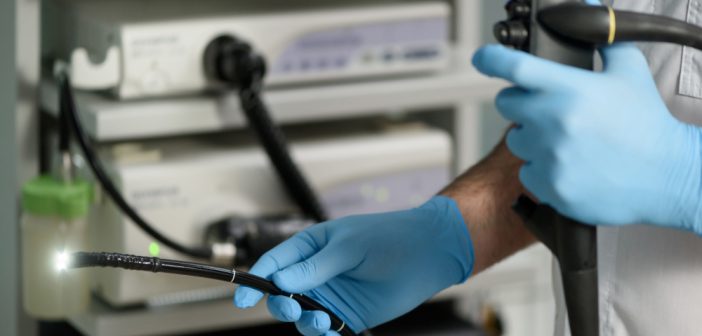It has been said that it takes an average of 4.6 years and tens to hundreds of millions of dollars to get a medical technology through R&D, Regulatory, Manufacturing, and Clinical Research before it is successfully commercialized and sees wider acceptance and adoption.
That is a very long lead time and hundreds of thousands of hours of hard work too. The global regulatory approvals landscape has always had its changes and challenges for all countries, but often far too many MedTech companies think that this is enough to pitch to hospitals and clinicians to get their MedTech products paid for and adopted. They miss the Market Access question, tragically, and fail.
21st Century Reimbursement Challenge
Worldwide, Health Technology Approval (HTA) bodies or the likes were originally set up as a filter between the manufacturers of Medical Devices and Healthcare payer systems, as a screening process to ensure Payers are better informed if Devices were safe for patients, effective and value for money.
Some focus more on safety and efficacy approvals, but as we entered in 21st century, healthcare costs have grown enormously while GDP growths haven’t kept well. There is simply no bottomless pit of money in healthcare for payers to fund every new device the surgeon wants to use, there has been a very strong movement across the world to look at the added value before approving a new treatment in the healthcare system.
NHS
Take the UK publicly funded Healthcare system, the National Health Service or NHS. Following the above steps, technologies that are used in a brand-new operation or procedure often need to go through approval with the National Institute for Health and Care Excellence (NICE) interventional Procedures programme. This particular NICE process only looks at safety and efficacy, not cost, and to some manufacturers they think that’s enough for the NHS to rapidly adopt their technology, and are unaware of NICE’s other evaluations that do focus on cost effectiveness, and when successfully navigated result in global benefits though NICE’s reputation as the world’s leading HTA.
While UK is widely seen as a gold standard for clinical and economic assessment of medical technologies, several countries like France, Germany, Canada, Australia, Japan, South Korea and USA among others have developed their own methodologies and approaches to determine the true value and impact of a new medical treatment in their healthcare system, based on their national policies and priorities. Essentially, all countries are facing economic crunch due to rising healthcare costs and looking for appropriate tools to determine which medical technologies and therapies are producing best “healthcare value” for their population. And, this has given rise to the value-based healthcare movement resulting in a quest to migrate from Cost-based to Value-Based healthcare system.
Shifting gears
Going back to the launch stage of a medical device, why are so many manufacturers using archaic and failed methods of coming up with a justifiable sales price for a new technology, when it has impacts for patients, providers of care and payers of care?
Most Device Companies work on the same principles that are used in the world of fast-moving consumer goods, based on the manufacturing of device cost price plus a healthy margin. Some go to lengths of finding out what they could sell their devices for by conducting interviews with clinicians but are clinicians really qualified in understanding the value and benefit of a great new technology beyond their part of using or implanting them? And how do they justify the investment up the line to their managers for purchasing less the government reimbursement and HTA agencies?
This traditional mechanism of pricing often leads to disappointing results. It can result in adoption failure as the benefit of a technology that brings benefits to patients, providers and payers have not been thoroughly researched, understood and integrated in the Pricing strategy and therefore the value of a new therapy cannot be communicated scientifically to all key stakeholders involved in reimbursement approval decision.
This approach will have an effect on the selling price which should be optimized, for the benefit of the device manufacturer, so the technology reaches the largest, most needy and most appropriate patient cohort, in the fastest possible way maximizing return on invest.
While some pharma companies have been scrutinized for pricing, the overall industry has worked really hard over the years and largely followed a scientific way of pricing a product. So, is there something to learn here from the pharma industry? Can you imagine the pharma industry speed-dating with a handful of physicians and administrative purchasing staff and guess selling price principles? No because the investment cost of a new drug taking more than a decade to invent, test, manufacture, and get approved must be fully justified to all key stakeholders and for that they work backwards, consults wide array of government and commercial payers, reimbursement and HTA agencies, hospital management along with key physicians and apply most scientific pricing principles throughout the lifecycle of a technology before a pricing decision is made, let alone to get funding and investment to do so.
Eric Mortensen, former Vice President Global Innovative Pharma at Pfizer and former Chief Medical Officer of CytoSorbents, a medical technology firm developing therapeutic devices for acute care, said ” Previously medtech devices were permitted greater latitude to demonstrate their utility while physicians explored the optimal approach to incorporation of novel technology in the treatment paradigm. Now however the rising cost of medicines and medical devices has placed increased pressure on hospital procurement officers, health authorities and third-party payers to have a more quantitative understanding of the cost-effectiveness of emerging treatments. This is also occurring at a time when transformative therapies with the potential to deliver significant benefit to patients often require novel clinical trial designs and study endpoints to adequately demonstrate the ability of new treatments to deliver on their promise as additions to standard of care clinical practice.“
At a time when the new EU MDR standards are intended to provide greater transparency of information on the benefits and residual risks for patients, increasing the quality of safety and effectiveness data required for registration, this means that MedTech companies will have to increasingly plan for the type of parallel thinking in their development programs typical of Pharma programs to deliver the evidence needed to provide for optimal pricing at the time of device regulatory clearance or approval. Similarly, the dialog with regulators and payers must be initiated early in the development timeline to permit all stakeholders within the MedTech company to contribute to an optimal strategy if a delay in the time to market or alternatively an erosion in the desired target price is to be avoided. It must also be considered that while a regulatory pathway based upon demonstration of equivalence to a previously marketed device may provide for an accelerated time to market introduction this approach, by itself, is unlikely to provide premium pricing for a new market entrant or differentiation from competitors sufficient to shift market share from established brand and contractual relationships to novel market entrants.
So, what is the right approach and when is the right time to consider value when inventing a new technology?
For that, let’s take a look at what the most common principles used by the MedTech industry, and these are often the Principles of Marketing, or 4Ps, a process designed 60 years ago in the 1960’s.
The principles of the 4P Marketing Strategy or Matrix is that marketing decisions tend to fall into four categories, product, place, price, and promotion. They are referred to as four ‘controllable’ categories. They are ‘controllable’ because manufacturers efforts affect them or their outcomes.
Government policy or rules and regulations, on the other hand, are ‘uncontrollable’ categories, and manufacturers efforts need to learn to influence them, and understand this as early as possible in the process, and not in the case of MedTech companies focussing just on the regulatory approval process, but also focus on the value proposition scientifically, and to engage with organisations, like NICE in UK or GBA in Germany or CMS in US to assist them in a National market access strategy for adoption.
What is Market Access and why is it important?
In our experience of engaging with thousands of Manufacturers of Medical Devices, the term Market Access has been used extensively used but loosely defined, so what is Market Access, what does it mean and what has it got anything to do with Marketing?
For this we describe the “4 Principles of Market Access” to help manufacturers think differently, scientifically, and strategically to bring great technologies so patients ultimately get them sooner.
- Benefits to Patients
- Benefits to care Providers
- Benefits to Payers of care
- Benefits to the Product
Benefits to Patients
First and foremost, and quite rightly, the ideas of new products are often focussed on improving patient’s lives and outcomes. Solution for high unmet need, less invasive, less pain, faster recovery, improved quality of life and return to normal life with minimal risk to life. This has a far wider cost effect on welfare and if the existing treatment often fails, this has an effect on the patient’s life and their dependence on the provider of care and payer.
The patients voice around existing therapies and excitement around the new techniques are today very strong due to social media, and form part of the very important feedback required for HTA’s, particularly in some countries such as UK, that take the patients voice and charities feedback very seriously in all their reimbursement evaluation programs.
Benefits to Providers of Care
Many manufactures here default to the fast-moving consumer goods principles, the most common hardly scientific conversation being “it’s better” or “the only alternative available” or “it’s cheaper” and increasingly used “it’s innovative” which doesn’t really help the hospital decision makers unless there is a scientific way to tie the claims to the clinical and economic outcomes for their local institution. Today, hospital decision makers need to work really hard and complete mountains of paperwork and subsequent meetings to justify new technology adoption to a broad set of stakeholders sitting in the value analysis and decision committee of the hospital. If what they are buying is not going to easily explain how a new product will help them deal with the big issues in a Hospital then it’s often easier for the committee to default to use the same old existing proven technology with predictable outcomes, that the clinicians are used to.
The very worse outcome here is that the conversation between the Sales person selling a new device following 4.6 years and tens of millions of dollars investment, ends up with a Hospital Procurement Manager who is qualified to order cornflakes and bandages, but becomes the ultimate decision maker. It is no wonder these conversations often end with downward pricing negotiation and profit and value erosion, often when the salesperson has failed to demonstrate the value and benefit to the right people higher up in the Hospital organisation.
But are the MedTech Salespeople of today equipped with the science, market access tools and the essential knowledge to do so?
So, this is where understanding the bigger picture is so valuable, let’s take the UK NHS again where up to 45% of inpatient admissions and 25% of outpatient referrals are now due to a growing and ageing population, and where demand for elective and cancer treatments is growing, year on year.
Despite increased funding year on year, patients are being let down by the NHS’s continued failure to meet deadlines for waiting times. The percentage of patients treated within waiting times standards continues to get worse for both elective (non-urgent care) and cancer treatment.
Less than half of NHS Hospitals meet the 18-week (that’s 4.5 Months) waiting times standard for elective treatment, and only 38% meet the 62-day (2 months) standard from referral to treatment for cancer patient’s (1) NHS Hospitals now routinely operate with a bed occupancy rate of more than 90%.
This of course affects elective patient care as patients may have their elective care treatment postponed because the beds are needed for emergency admissions, resulting in delays to treatment and poorer patients.
This all due to bottlenecks in the Hospital system and exactly where technology can help save valuable bed days with less invasive treatments, providing better home services and improving care pathways, resulting in positive economic impact for providers while improving patient outcomes and level of satisfaction.
But without the salespersons understanding of the big picture and access to adequate reimbursement training and tools to demonstrate how the technology can help solve the Hospital issue around financial impact, patient outcomes and overall productivity the default language of “better features or innovative or cheaper” is really not helping.
Benefits to Payers of Care
The payers of care hold the money to fund the providers of care – the Hospitals and physician clinics for the care episodes and funding the treatments and medical technology.
For decades, again the pharmaceutical industry, particularly in the UK have had the privilege and benefit of knowing very detailed information on the prescriptive use of drugs and subsequent disease states down to the pharmacy provider, by zip code or post code accuracy. This makes it relatively easy to understand payer (or Clinical Commissioning Group CCG) spend and activity.
This information on usage really helps Pharma to have far better value and benefit conversations with the payers than the MedTech industry.
On the contrary, the MedTech industry often does not even engage with the payers until it’s too late, and if they managed to engage at the right time during product development phase, they would need to really raise their game in terms of understanding the target population they treat, growing payer evidence requirements and how to demonstrate the real-world benefit of their devices with a meaningful impact on the healthcare systems, nationally and locally for each payer.
As healthcare costs are rising and number of new devices seeking reimbursement growing exponentially, payers are facing tremendous pressure to scrutinize the added value of new treatments and deny or restrict coverage for technologies that doesn’t have sufficient evidence to show significant improvement in patient outcomes.
With more than 100 key HTA and reimbursement agencies in developed markets alone (compared to a handful of regulatory agencies such as FDA and CE Notified bodies), medical device companies will have to be better prepared for the new brutal reality of payer approval process and razor thin survival rates in medtech industry. It is of utmost importance to develop your market access strategy early on that truly aligns R&D, regulatory, clinical and commercial activities with emerging payer and reimbursement landscape.
This will ensure the ultimate benefit communication with key market access decision makers should be around getting the right treatment for the right patients and real justification for adoption and Hospital coverage and pricing approval.
Benefits to the Manufacturer of Products
This is where manufacturers who think early enough, can really optimize their sales price and design devices around a more scientific budget and price.
Starting with understanding the pricing associated and economics for the patient pathway, the outcomes and benefits for providers of care and payers, they can truly start to understand how to optimize their product price and not only use the traditional 1960’s principles of marketing and margin for their technology.
For the UK, despite growing needs and demands for the population, NHS England treated 400,000 more elective patients last year, and 362,000 more emergency patients too.
So the market and need for great transformative Medical Technology is undoubtedly growing globally, the patients are better informed and want it, the providers need it to deliver great care and get paid, and the payers want value for money, better outcomes and pay premium for the right care first time.
If the MedTech industry engaged at a higher level as consultative and collaborative problem solvers, were not afraid of using the organisations like NICE or GBA or CMS around them to validate and support their story, products would reach patients faster, providers and payers would benefit, and ultimately for the MedTech industry they would likely be far more successful in running a sustainable and profitable business.
Authored by Michael Branagan Harris, CEO Device Access UK Ltd
Amit Kukreja Former Vice President-Global Market Access, Second Sight.







